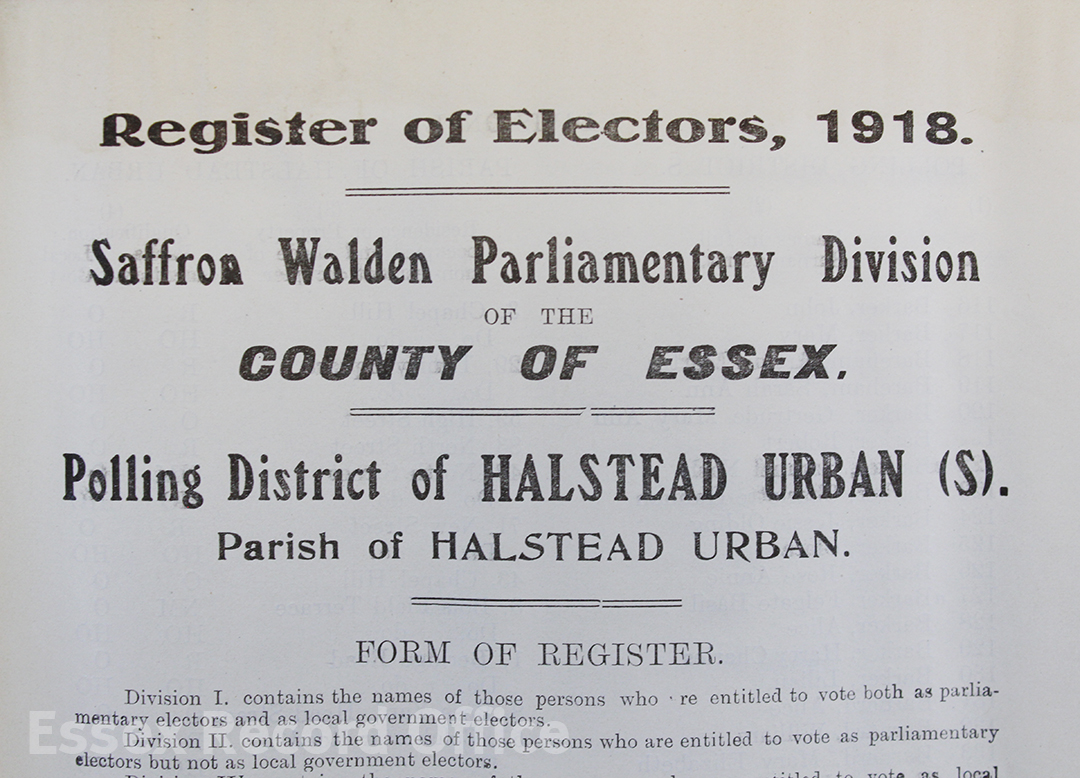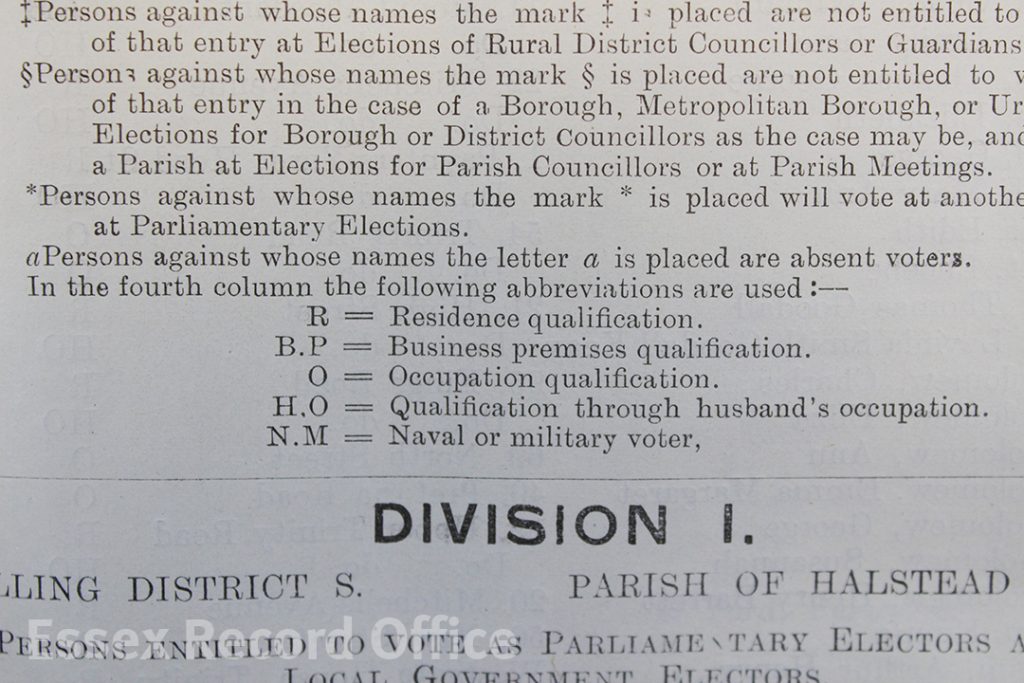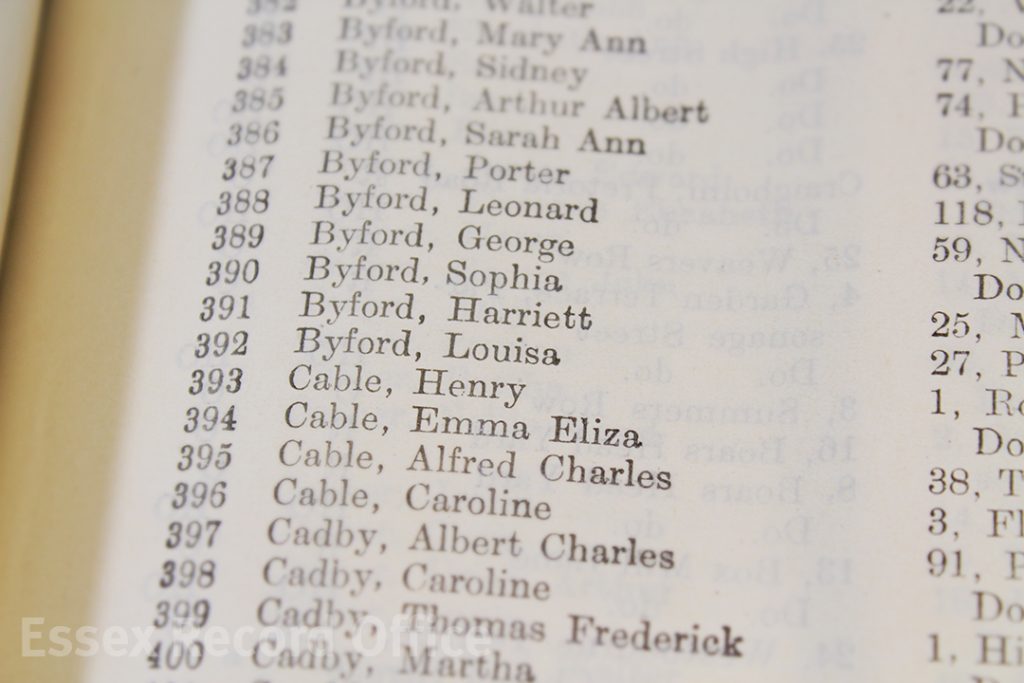Katharine Schofield, Archivist
Our Document of the Month for February 2018 is an electoral register for the Saffron Walden Division from 1918 (C/E 2/8/1) – the first year that women appear in registers of parliamentary voters.

On 6 February 1918 the Representation of the People Act gained royal assent. This entitled all men over the age of 21 to vote, previously only 60% of men who met the property and residential qualifications had been eligible. More famously, for the first time women over 30 were able to vote in parliamentary elections, provided that they met certain property qualifications. In the 1918 general election the electorate trebled from 7.7 million to 21.4 million, with women accounting for 43% of the total.

The register outlines the qualifications needed to vote. Women over 30 could qualify on their own account, or through their husband’s occupation.
The immediate impetus behind the change was the First World War. Under the previous Act of 1884, many men who had fought would not have been entitled to vote. The war years had also seen women working in jobs vacated by men as well as working as part of the war effort, in munitions factories such as the Royal Gunpowder Mills at Waltham Abbey where more than 3,000 were employed. Women had long worked in many industrial areas of the country, particularly the mill towns of the north-west. In 1901 nearly 30,000 women signed the Mill Girls’ Petition and two years later the Women’s Social and Political Union (WSPU) was founded in Manchester. Three years later, in 1906, the first London branch was founded in Canning Town. Interestingly, the Canning Town branch was expelled from the WSPU in 1914 when the women’s campaign broadened into other issues such as housing and working conditions which affected the women of the area.

Harriett Byford of 25 Mount Pleasant, Halstead, appears among other Halstead women who could vote in parliamentary elections for the first time. Her sisters however, had to wait until 1928 to be able to vote.
In Halstead the new Act doubled the parliamentary electorate. Harriett Byford of 25 Mount Pleasant had previously been entitled to vote in local elections, but was for the first time listed among the parliamentary electors. She was 62 and at the time of the 1911 census, a silk weaver, presumably employed in Courtauld’s silk weaving factory in the town. Her younger sisters Tamar, 59 and Emily, 53, who lived at the same address in 1911 and were also employed in silk weaving, were still not entitled to vote as they did not meet the property qualification. Women like Tamar and Emily had to wait until the Equal Franchise Act of 1928 extended the right to vote to all women aged over 21.
Over the next few weeks we will be publishing stories of some local Essex campaigners and the actions they took, peaceful and militant, as part of the decades-long campaign to achieve votes for women.
Digitised copies of the electoral registers for Essex from 1918 and 1929 are available on our catalogue, Essex Archives Online. These are the first registers in which women appear – in 1918 those who met the qualifications, and in 1929 all women over 21. Who might you discover in these essential records?
